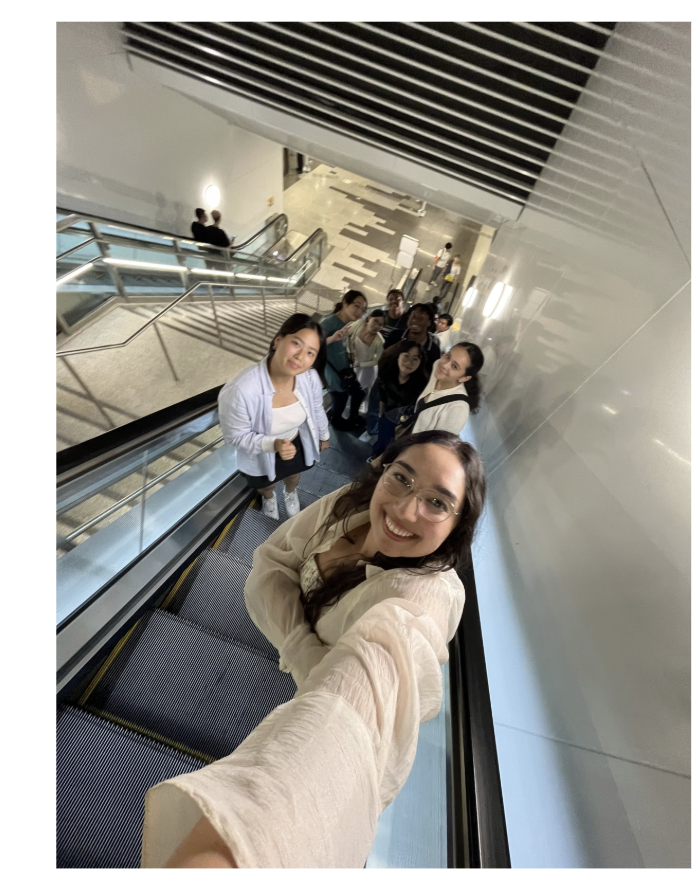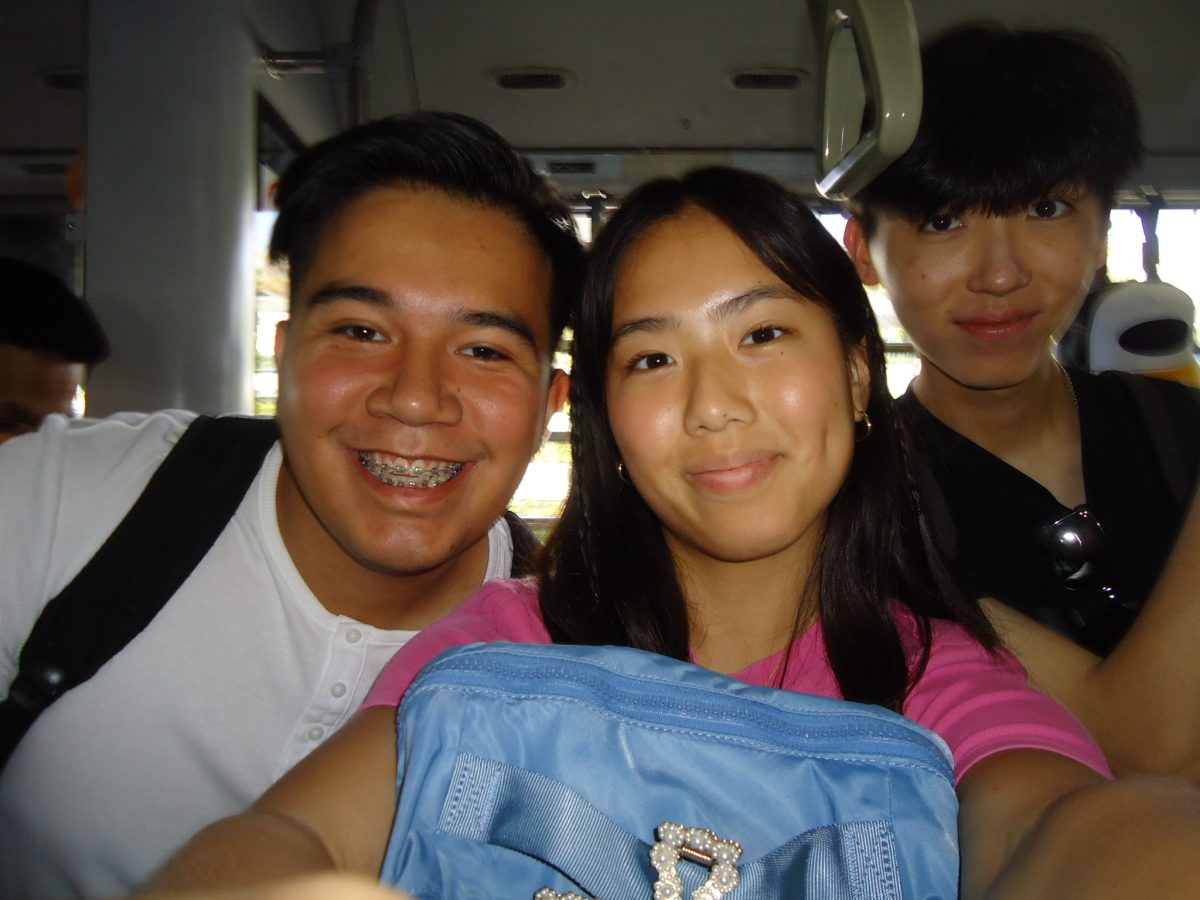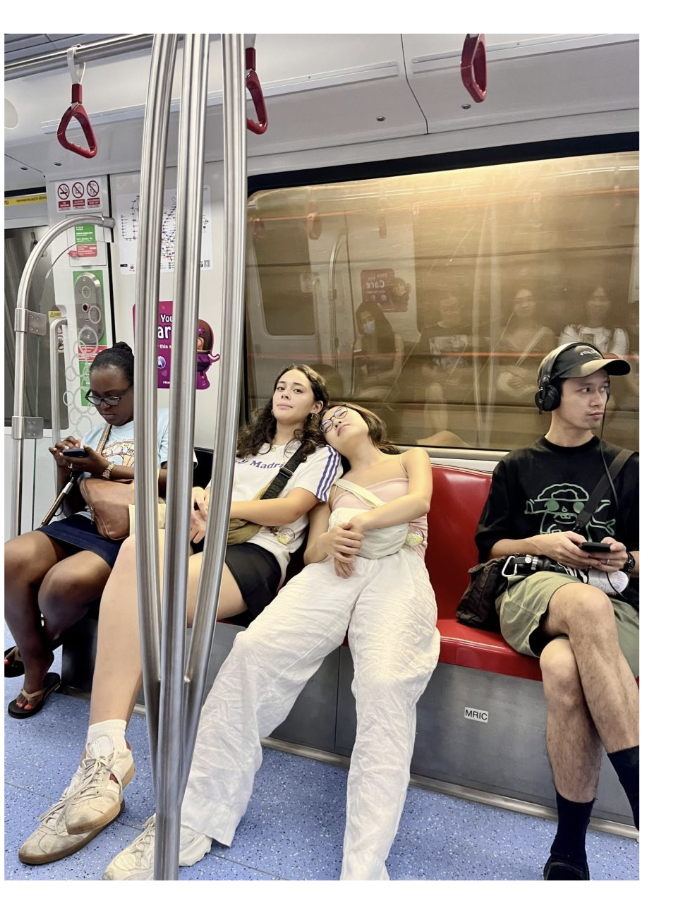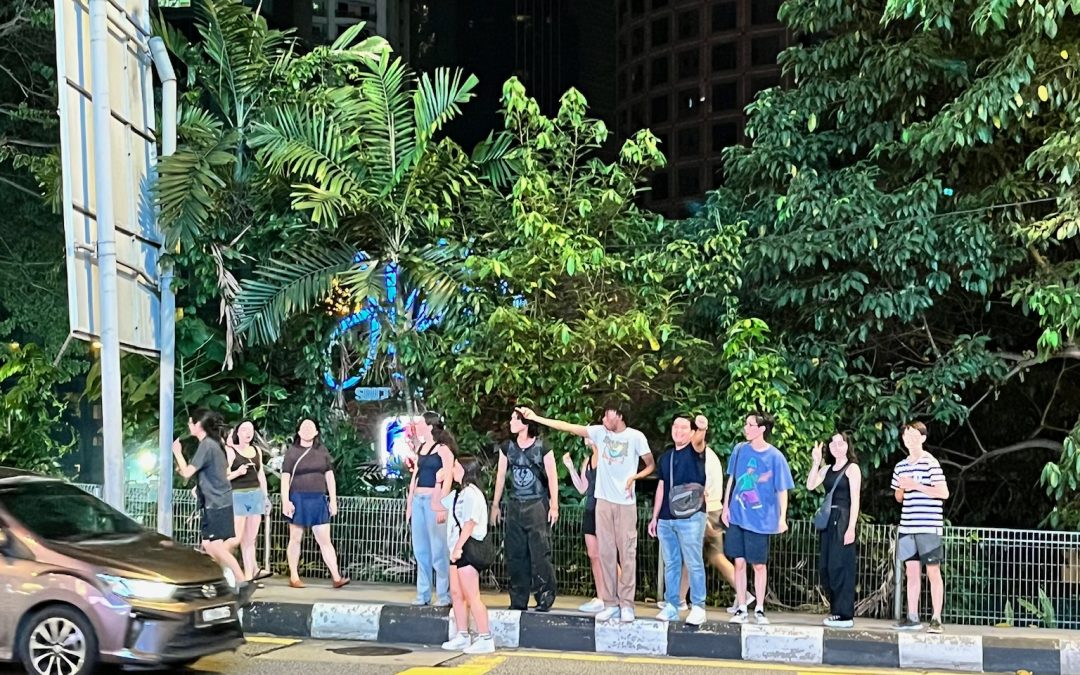They say eyes are the window to the soul, but in Asia this summer, I realized they’re more similar to X-ray machines. My Asian features seemed to give me temporary invisibility until I was joined by another person of a different ethnicity, turning us into a sidewalk spectacle. While the Honors Program asked me to analyze these cities, I didn’t expect them to analyze me right back.
Traveling through Malaysia, Singapore, and South Korea this summer allowed me to witness firsthand the differences in urban life, social norms, and culture, both as an observer and, at times, as someone whose identity sharpened or softened those contrasts. For the Honors City as TextTM assignments, I compared how outsiders are treated, how food cultures function, how societies navigate public spaces, and more. These experiences reshaped my sense of belonging, especially as someone of mixed-race (half Filipino, half Korean). In Seoul or Busan, my Korean looks meant fewer stares—until I was joined by my Filipino father, and the attention seemed to skyrocket, revealing unspoken biases even in a society I was part of. This dynamic was even more noticeable for my non-Asian classmates when visiting Malaysia and Singapore; they drew constant stares in these countries, their visibility acting as a reminder of how ethnicity shapes the tourist experience. Where I could occasionally blend in, they were repeatedly marked as outsiders, their presence analyzed with glances that ranged from curiosity to discomfort.

These social dynamics were most visible in public places. In Singapore’s Joo Chiat Road, my group’s foreignness drew polite but persistent glances—a quiet curiosity that never quite led to conversation or interaction. For my non-Asian friends, though, those glances lingered, sometimes turning into scrutiny. Malaysia was a mixed bag: shopkeepers in Kuching laughed at our tourist blunders with warm amusement and hospitality. However, my African American friend’s attempts to bargain at a street market were met with hesitant pauses as if they were wary about his presence. South Korea was the most revealing. While I could move through Seoul’s streets mostly unnoticed, my dad wasn’t as lucky; older locals stared openly, their confusion and curiosity visible. These experiences and troubles truly underscored how belonging is not just about knowing the culture but fitting a visual mold—one that was unattainable for some of my family and friends.
However, one of the most welcoming parts of these cities was their vibrant street food culture. As night fell, the sidewalks in Malaysia, Singapore, and Seoul transformed into bustling open-air kitchens, with food stalls serving quick, affordable bites to locals and travelers alike. In Penang’s Lorong Baru night market, families crowded around plastic tables digging into plates of char kway teow. In contrast, Seoul’s Myeongdong street market hummed with the same energy—strangers bonding over 떡볶이 (tteokbokki), 어묵 (eomuk), and more. Even the eating habits crossed borders: whether using your hands to eat in Kuching or sharing seafood skewers in Busan, the unspoken rule was the same: good food is for everyone.
The accessibility of it all—no reservations, no dress codes, just paper plates and shared stools—made these spaces feel safe and welcoming. For a few dollars and a stomach ready to eat, you belonged. The rhythm of these cities revealed itself not just through food but in how people navigated their streets and subways. The subways in both Singapore and South Korea were unreal—spotless, perfectly on time, with everyone minding their own business. But once above ground, things started to differ. In Malaysia, crossing the street felt too easy—locals would just go, weaving through traffic with their hands out and unshakable confidence, while drivers adjusted without blinking. Meanwhile, in Singapore and Seoul, people seemed open to missing their train rather than crossing against the light, even late at night with no cars around. I watched people slow their stride when the walk signal started flashing—almost as if they were hardwired to obey. It amazed me how these systems worked perfectly: Malaysia’s chaotic walking kept things flowing. At the same time, Seoul’s military precision crossings showed their next-level respect for order. They were the same continent, totally different rulebooks—and I loved both.

Through all the cities, Kuala Lumpur and Seoul felt the most similar to me, where shopping malls seemed to be everywhere, streets buzzing at all hours, street markets would magically appear at dusk, transforming quiet alleyways into food wonderlands. Both cities had this addictive energy where something was always happening—businessmen rushing to meetings, teenagers hanging out in themed cafes, grandmothers haggling over produce. The scale was overwhelming and comforting simultaneously; no matter what time our jet-lagged selves wandered out, there was always somewhere to go: a 24-hour convenience store, a street food cart, and many people just living their lives. These weren’t just cities—they were living organisms that never slept. By the end of the summer, I wasn’t just observing these cities—I was seeing reflections of myself in them.
In Seoul’s orderly crosswalks, I recognized my duality: the part of me that craved structure and that longed for Malaysia’s chaotic freedom. In the night markets, I saw how food could connect people when language failed—yet how easily shared meals contrasted with the unshared burden of stares my friends endured. These cities mirrored my mixed identity right back to me: in one moment invisible, in another hyper-invisible; Sometimes, it is a local, and sometimes, it is a foreigner in places that should’ve felt like home. The constant recalibration was demanding but left me wiser. Like I’d been taught the lifelong lesson of the mechanics of belonging.

This summer’s trip through Malaysia, Singapore, and South Korea turned into an overall City as TextTM project, except the cities were reading me right back. Sure, the Honors Program wanted me to analyze urban spaces. Still, I quickly learned that these places had their way of sizing me up through their sideways glances, street food rituals, and unspoken social rules. One minute, I’d get stares based on my mixed-race appearance; the next, I’d bond with strangers over shared skewers at a night market. Seoul’s perfect crosswalks and Malaysia’s chaotic markets might seem like opposites. Still, both have their way of making you feel observed and welcomed. Ultimately, I realized that the magic of City as TextTM isn’t just about studying places—it’s letting them change how you see yourself and the world.
— Brianna Barruga, Class of 2025; Business Management/Pre-Medicine

